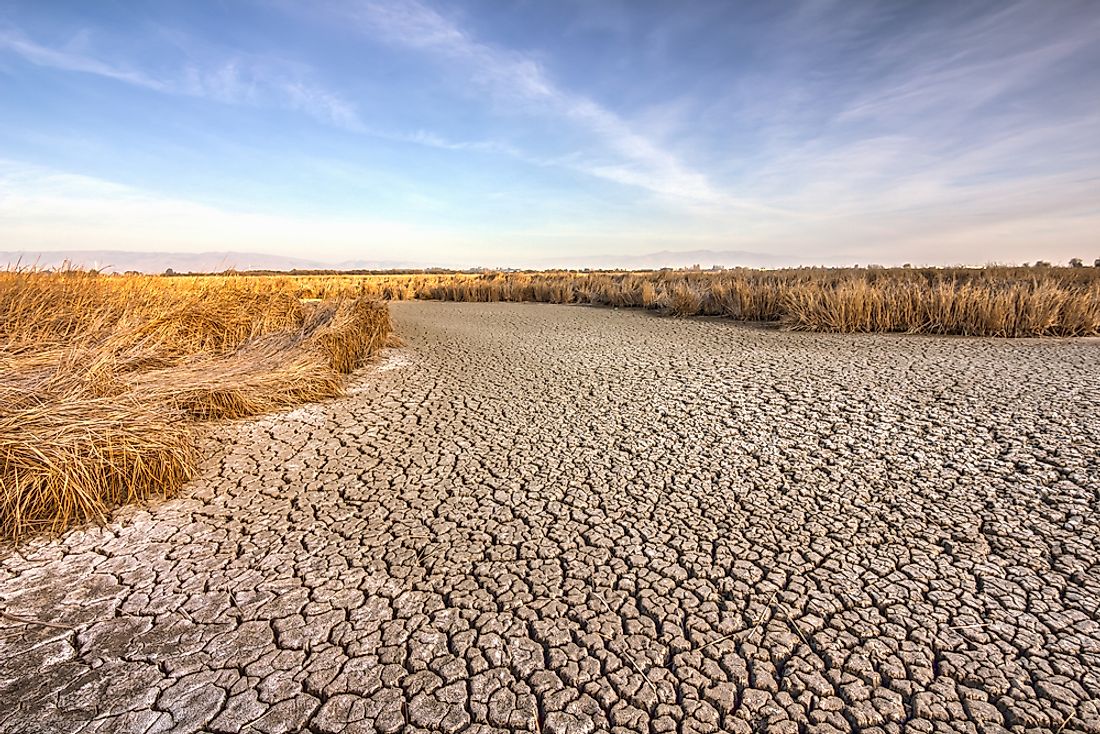What Caused the California Drought?

What Is The California Drought?
The State of California has recorded some severe droughts throughout history. As California is a state with a vast array of agricultural regions, droughts can translate to adverse economic and environmental impacts. The causes of droughts vary from weather patterns, farming practices, political and economic actions, and population.
Weather Patterns
Temperature swings in the ocean were blamed for fueling the California drought. According to researchers, a region of high atmospheric pressure in the equatorial Pacific diverted winter storms preventing them from reaching California. The high-pressure ridge originally formed in the 2011 La Niña which disintegrated with the 2011-2012 winter. However, the western equatorial Pacific remained warmer, a situation that caused drought in the State of California. The high-pressure ridge was favored by the warm waters through the winter of 2013-2014. The State subsequently experienced a decrease in rainfall as well as snowfall which was detrimental as it relies on both of these elements for its annual water resources.
Climate Change
The National Oceanic and Atmospheric Administration (NOAA) Drought Task Force Report published in 2014 did not attribute the drought to long-term precipitation change but rather to natural variability. The report suggested that the extremely high temperatures recorded during the drought period may have been made worse by human-triggered global warming. Another study conducted in 2015 estimated an 8-27% contribution of global warming to the drought event. As global warming continues to unfold, its particular role in the California drought is yet to be determined as droughts in the state are a common phenomenon.
Water System In California
A network of water systems caters to more than 30 million people and a further 5,680,000 more acres of irrigation land. Water resources in the region are limited because of an unreliable rainy season. The state has not implemented much water infrastructure since 1979 even though the population has doubled since then. The state’s reservoirs lack enough capacity to contain one year’s worth of precipitation. In February 2017 for example, several reservoirs diverted water into the Pacific Ocean as a flood control measure. Leaky distribution systems further affect the amount of water available to consumers. It is estimated that it would take nearly six dry years to empty the water held in California’s reservoirs at the current rate of water use. The state has large water consumers such as the estimated 2.7 trillion gallons it exports annually in cattle feed. In comparison, the state's urban water consumption per year is approximately 2.3 trillion gallons.
Effects Of The Drought
In April 2015, the state’s governor Jerry Brown ordered reductions in water use across California. The order sought to reduce the consumption of water in urban regions by 25% from the levels consumed in 2013. Farmers were hugely impacted by the drought as water prices soared. While an acre-foot in 2013 cost $140, the price in 2014 was $1,100 per acre-foot. During the drought, water was extracted from reservoirs at a rate some reports have suggested was unsustainable. The drought was blamed for the death of millions of trees and also triggered wildfires. Heavy precipitation led to the end of the drought, declared officially on April 7, 2017.











